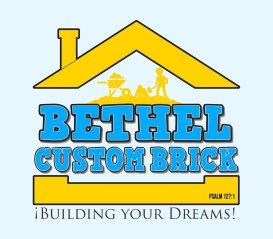Masonry repair techniques like tuckpointing and repointing are essential for preserving the structural integrity and aesthetic appeal of brickwork. While these terms are often used interchangeably, they are distinct processes with specific purposes. Understanding the differences between tuckpointing and repointing can help homeowners make informed decisions about maintaining their masonry. Here’s a detailed look at both techniques and when to use them.
What is Tuckpointing?
Tuckpointing is a specialized masonry technique used to enhance the appearance of mortar joints in brick or stone structures. It involves:
- 1. Removing Deteriorated Mortar: The old, damaged mortar is carefully removed from the joints.
- 2. Applying Two Layers of Mortar: A base layer of mortar is applied, matching the color of the bricks or stones. A second, contrasting mortar layer is then used to create thin, precise lines that mimic the appearance of perfect joints.
Purpose of Tuckpointing:
- Aesthetic Enhancement: Tuckpointing is primarily decorative, improving the uniformity and appearance of brickwork.
- Structural Reinforcement: It also provides some structural benefits by replacing deteriorated mortar with fresh material.
Tuckpointing is commonly used for historic buildings or decorative masonry where visual appeal is a priority.
What is Repointing?
Repointing is a repair process focused on restoring the structural integrity of masonry by replacing damaged or eroded mortar. The steps include:
- Removing Old Mortar: The deteriorated mortar is removed to a specific depth, usually 1-2 inches.
- Filling with Fresh Mortar: New mortar is applied to the joints, matched in color and texture to the existing mortar.
Purpose of Repointing:
- Structural Restoration: Repointing is critical for repairing weakened masonry and preventing further deterioration.
- Weatherproofing: It seals the joints to prevent water infiltration, reducing the risk of damage caused by freeze-thaw cycles.
Repointing is primarily a functional repair method, ensuring the masonry remains stable and weather-resistant.
When to Use Tuckpointing or Repointing
Use Tuckpointing When:
- The mortar is discolored or uneven but still structurally sound.
- You want to enhance the aesthetic appeal of your masonry.
- Restoring a historic building where appearance is a priority.
Use Repointing When:
- Mortar joints are cracked, crumbling, or missing.
- Water seepage or moisture damage is evident.
- The structural stability of the masonry is at risk.
Benefits of Professional Masonry Services
Both tuckpointing and repointing require precision and expertise to achieve effective and lasting results. Professionals can:
- Accurately assess the condition of your masonry.
- Match mortar colors and textures for seamless repairs.
- Use specialized tools to remove old mortar without damaging bricks or stones.
- Ensure long-term durability and visual appeal.
Partner with Bethel Custom Brick for Your Tuckpointing and Repointing Needs
At Bethel Custom Brick, we specialize in both tuckpointing and repointing to preserve and enhance masonry structures in the Detroit Metro area. Whether your project requires aesthetic restoration or structural repair, our skilled team delivers expert craftsmanship and tailored solutions. Contact us today to learn how we can help maintain and restore your brickwork with precision and care!


